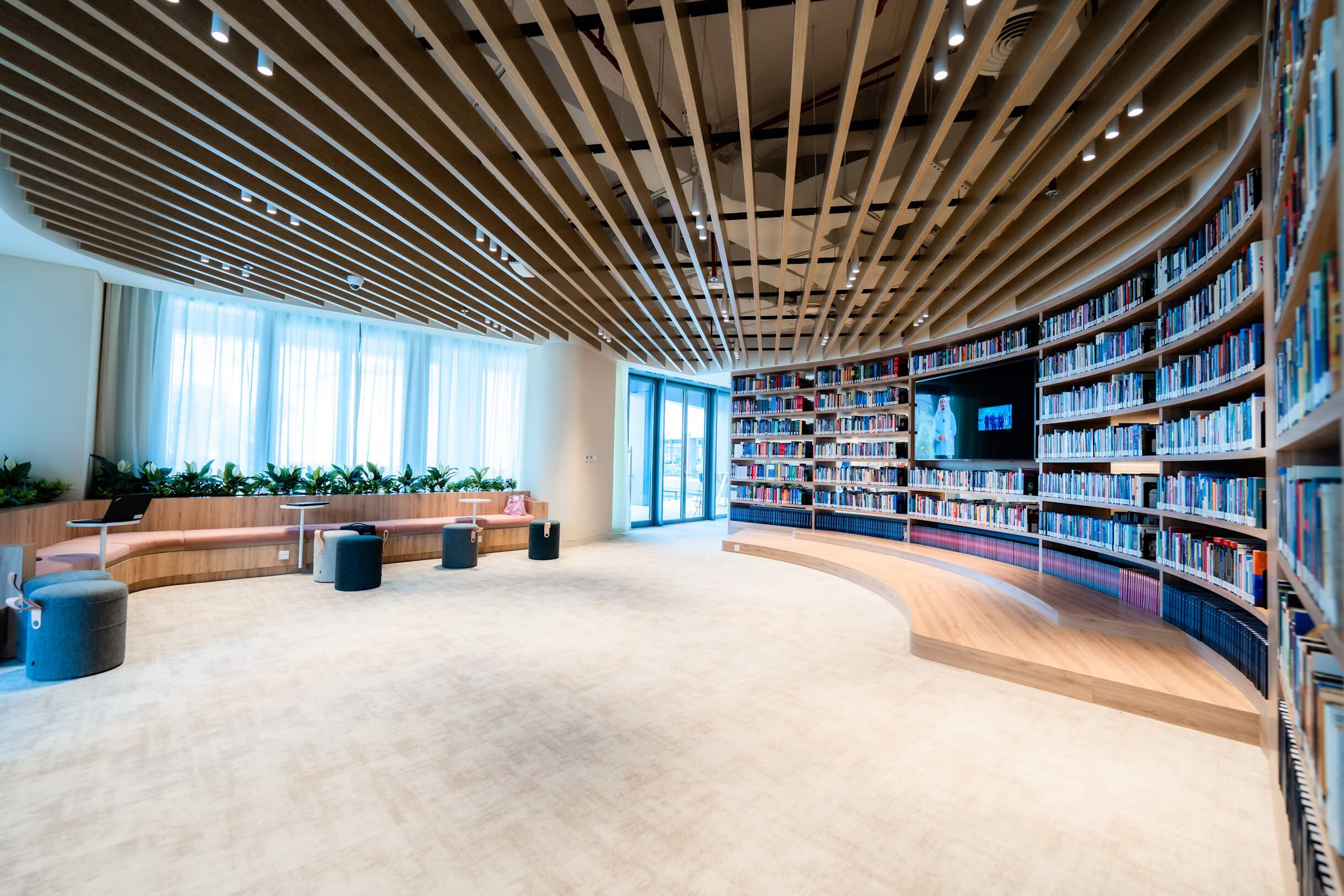MBRSG Repository
Research Repository at MBRSG
Welcome to MBRSG Policy Research Repository

Communities in DSpace
Select a community to browse its collections.
- This community represents student dissertations and publications by the academic community.
- Policy research conducted by the Department of Policy Research that includes proceedings, reports, articles, and policy briefs on wide ranging contemporary issues.
Recent Submissions
المؤتمر العالمي لتنويع الاقتصاد 2024
(Springer Nature, 2026) سالم، فادي.; سعيد، حامد.; سوبرماني، كيرتانا.
Proceedings of the Global Conference on Economic Diversification 2024
(Springer Nature, 2025) Salem, Fadi.; Saeed, Hamid.; Subramani, Keertana.
Bridging the AI Divide: inclusive governance innovation & competitiveness in the MENA region
(Mohammed bin Rashid School of Government, 2025-10) Alkhoudi, Salma; Shaer, Sarah; Salem, Fadi
The report provides an in-depth examination of the state of artificial intelligence (AI) governance and competitiveness across the Middle East and North Africa (MENA) region. It captures how Arab countries are adopting AI technologies, building digital infrastructure, and shaping regulatory frameworks to keep pace with global developments. Based on extensive fieldwork covering 327 AI and digital SMEs across ten countries, the study offers valuable insights into the opportunities and challenges shaping the region’s AI ecosystem. Findings reveal that the UAE and Saudi Arabia are emerging as regional leaders in AI readiness, supported by strong infrastructure, investment, and policy direction, while other MENA countries continue to navigate fragmented regulations, limited funding access, and talent gaps. Despite these disparities, the report highlights growing optimism among businesses and a shared recognition of the role of AI in driving innovation and economic growth. By emphasizing responsible governance, ethical frameworks, and regional cooperation, the report calls for strengthening AI education, research, and investment to bridge the AI divide and position the MENA region as a competitive and inclusive contributor to the global AI landscape. The study was developed in partnership with Google.org.
التخطيط الإستراتيجي والتميز المؤسسي منهجية تطبيقية لقادة وحكومات المستقبل
(قنديل للطباعة والنشر والتوزيع, 2025) Al Wazani, Khalid.; Al Marri, Ali.; Al Hammouri, Saleh.
يقدم هذا الكتاب مرجعا علميا وتطبيقيا متكاملا يجمع بين التخطيط الاستراتيجي والتميز المؤسسي، في إطار أكاديمي رصين وتجربة عملية عميقة.
يعرض المؤلفون بأسلون منهجي ومتدرج مفاهيم التخطيط الاستراتيجي، ومراحله، ومحدداته، وأساليب تنفيذه، قبل الانتقال إلى تحليل شامل لمفهوم التميز المؤسسي، ونماذجه، وممارساته، مع تسليط الضوء على التجربة الرائدة لدولة الإمارات في هذا المجال.
يتمزي الكتاب بإبرازه للعلاقة الترابطية بين التخطيط والتميز، ويستعرض دور القيادة في تحويل الرؤية إلى إنجاز مؤسسي مستدام. كما يتناول موضوعات حديثة مثل الذكاء الاصطناعي، القيادة الإبداعية، واستشراف المستقبل.
إنه مصدر معرفي ثمين للباحثين في الدراسات العليا، والقادة، وصناع القرار، ولكل من يسعى إلى بناء مؤسسات عالية الأداء ترتكز على رؤية استراتيجية واضحة وتمتاز بالتميز المستدام.
طريق القيادة علي خطى محمد بن راشد
(Qindeel Publishing, 2025-10-07) Almarri, Ali bin Sebaa
“كل واحد منا يولد وفي نفسه بذرة من صفات القائد، يستطيع أن ينميها ويطورها، ويتقدّم إلى طريق القيادة حتى يصبح قائدًا عظيمًا”.
صاحب السمو الشيخ محمد بن راشد آل مكتوم
“طريق القيادة على خطى محمد بن راشد” ليس كتابا تقليديًا في الإدارة، بل دليل تطبيقي ينبض بالمعنى، ويجمع بين أصالة القيم الإماراتية، وأحدث مفاهيم القيادة العالمية. يُخاطب القادة الطموحين، وصنّاع القرار، وكل من يسعى لإحداث فرق حقيقي في حياته ومحيطه.
يجمع هذا الكتاب بين الرؤية القيادية لصاحب السمو الشيخ محمد بن راشد آل مكتوم، والخبرة الميدانية للمؤلف الدكتور علي بن سباع المري، ليقدّم خارطة طريق متكاملة تبدأ من تطوير الذات وتنتهي بصناعة الأثر في الآخرين.
في جزءه الأول، يأخذك الكتاب لاكتشاف القائد الكامن بداخلك: عبر الفهم السليم للقيادة، وترسيخ القيم، والتخطيط الطموح، والتعلم الذكي، والمثابرة والاجتهاد.
وفي جزئه الثاني، يرشدك إلى ممارسة القيادة بفعالية: من صياغة الرؤية، إلى تمكين الفريق، وبناء ثقافة الابتكار والتواصل الفعّال، وتحقيق نتائج تُخلّد الأثر.
كل فكرة فيه كُتبت لتُلهم، وكل مبدأ صيغ ليُطبَّق، وكل فصل صُمّم ليكون خطوة عملية نحو الريادة.
إنه ليس مجرد كتاب… بل هو رفيق درب لكل من يؤمن أن القيادة مسؤولية، وأن التغيير يبدأ من الذات.
